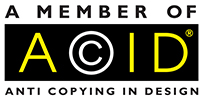Shibori Stream Level 1 Memory Prompts – Class 1
[vc_row css_animation=”” row_type=”row” use_row_as_full_screen_section=”no” type=”full_width” angled_section=”no” text_align=”left” background_image_as_pattern=”without_pattern”][vc_column width=”3/4″][vc_row_inner row_type=”row” type=”full_width” text_align=”left” css_animation=””][vc_column_inner][vc_column_text]Here are the silent movie snippets as introduced during the workshop. Please feel free to email me if you need any further help.[/vc_column_text][vc_column_text css=”.vc_custom_1599554315600{padding-top: 20px !important;padding-bottom: 20px !important;}”]
A starting knot
Choose a needle to suit the fabric you are using. Avoid those with a bulbous eye – though you could get away with it on loose weave fabrics. Long needles are great for straight rows of stitching but are very un-wieldy and get in the way for working curves and smaller shapes – you will find shorter needles the better option. My preference are embroidery needles 7 or 8. Milliner sometimes known as ‘straw’ needles are an option for a longer needle, as are Chenille needles. The smaller the number the larger the needle.[/vc_column_text][vc_video link=”https://vimeo.com/442623200″ css=”.vc_custom_1599554332078{padding-top: 20px !important;padding-bottom: 20px !important;}”][vc_column_text css=”.vc_custom_1599554341128{padding-top: 20px !important;padding-bottom: 20px !important;}”]
Buffers
Buffers trick the row of stitching to thinking that it is a lot longer than it is. It means that the effects seen at the start and end of a row of stitching – the area where the resist is just getting going – is on the buffer and not on your work. The buffer also carries that little resist dot of the start knot that you may not want. Resisted shapes worked with mokume shibori for instance, will have clean, ‘dotless’ – edges. Use at the start and the end of a row – or not depending on your design preferences.[/vc_column_text][vc_video link=”https://vimeo.com/442625280″ css=”.vc_custom_1599554354230{padding-top: 20px !important;padding-bottom: 20px !important;}”][vc_column_text css=”.vc_custom_1599554363245{padding-top: 20px !important;padding-bottom: 20px !important;}”]
Squishy buffers
These are great for maximising the resisted mark on silk and fine cottons. Again they lift the start dot off the body of your fabric. Because they are soft they create a halo effect to the mark as the dye seeps under the compacted buffer. Taking large stitches, 1”-2” on fine silk would result in a tiny dot – with a buffer you get a much larger resist.[/vc_column_text][vc_video link=”https://vimeo.com/442625542″ css=”.vc_custom_1599554375628{padding-top: 20px !important;padding-bottom: 20px !important;}”][vc_column_text css=”.vc_custom_1599554383612{padding-top: 20px !important;padding-bottom: 20px !important;}”]
Floating threads
These are threads that ‘float’ behind an area to create a shape for instance within several rows of stitching. Here they create blocks of stripes as nui sugi shibori is worked. When several rows are worked and threads are repeatedly floated, when the threads are pulled up a large pleat is formed with smaller pleats and folds either side. This large pleat dyes up plainly. Using floating threads on single layer of fabric will give you a right and wrong side. The outside of the fold will get the dye – the inside will be protected to a greater or lesser degree depending on the fabric you are working on.[/vc_column_text][vc_video link=”https://vimeo.com/442625913″ css=”.vc_custom_1599554398375{padding-top: 20px !important;padding-bottom: 20px !important;}”][/vc_column_inner][/vc_row_inner][/vc_column][vc_column width=”1/4″ css=”.vc_custom_1599554612527{padding-top: 20px !important;padding-right: 20px !important;padding-bottom: 20px !important;padding-left: 20px !important;background-color: #f1f1f1 !important;}”][vc_column_text][swpm_login_form][/vc_column_text][button size=”small” target=”_self” hover_type=”default” text=”Back to Level 1 main page” link=”https://janecallender.com/shibori-stream-members-area/shibori-stream-level-1/” margin=”25px 0px 10px 0px”][vc_column_text][swpm_protected for=”3″ do_not_show_protected_msg=”2″]
Back to welcome page
[/swpm_protected][/vc_column_text][/vc_column][/vc_row][vc_row css_animation=”” row_type=”row” use_row_as_full_screen_section=”no” type=”full_width” angled_section=”no” text_align=”left” background_image_as_pattern=”without_pattern”][vc_column][vc_empty_space height=”40px”][/vc_column][/vc_row][vc_row css_animation=”” row_type=”row” use_row_as_full_screen_section=”no” type=”full_width” angled_section=”no” text_align=”left” background_image_as_pattern=”without_pattern”][vc_column][vc_separator type=”normal” color=”#dddddd” thickness=”1″][/vc_column][/vc_row][vc_row css_animation=”” row_type=”row” use_row_as_full_screen_section=”no” type=”full_width” angled_section=”no” text_align=”left” background_image_as_pattern=”without_pattern” css=”.vc_custom_1599557441356{margin-top: 40px !important;margin-bottom: 40px !important;}” z_index=””][vc_column][vc_column_text]
Continue with Shibori Stream Level 1
[/vc_column_text][/vc_column][/vc_row][vc_row css_animation=”” row_type=”row” use_row_as_full_screen_section=”no” type=”full_width” angled_section=”no” text_align=”center” background_image_as_pattern=”without_pattern” z_index=””][vc_column width=”1/2″][button icon=”fa-arrow-left” target=”_self” hover_type=”default” text_align=”right” text=”Return to welcome page” icon_color=”#ffffff” link=”https://janecallender.com/shibori-stream-members-area/shibori-stream-level-1/”][/vc_column][vc_column width=”1/2″][button icon=”fa-arrow-right” target=”_self” hover_type=”default” text=”View Class 2’s videos” icon_color=”#ffffff” link=”https://janecallender.com/shibori-stream-members-area/shibori-stream-level-1/shibori-stream-level-1-memory-prompts-class-2/”][/vc_column][/vc_row][vc_row css_animation=”” row_type=”row” use_row_as_full_screen_section=”no” type=”full_width” angled_section=”no” text_align=”left” background_image_as_pattern=”without_pattern”][vc_column][vc_empty_space height=”40px”][/vc_column][/vc_row]


